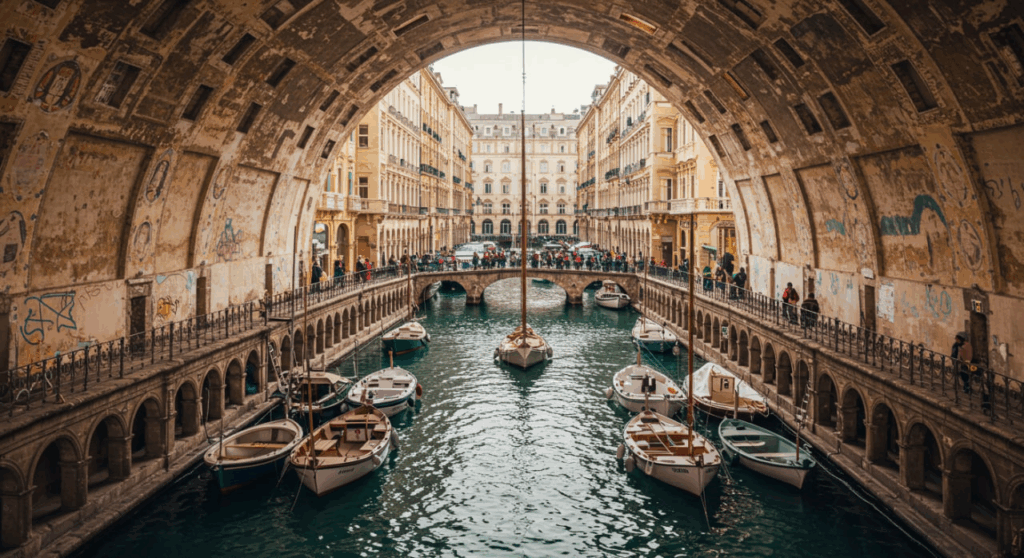Traveling through Europe’s cobblestone streets, historic landmarks, and vibrant cities doesn’t have to drain your bank account. With careful planning, a sprinkle of creativity, and a willingness to embrace the local lifestyle, you can explore Europe on a budget of just $50 a day. This guide dives into practical strategies, insider tips, and real-world travel hacks to make your European adventure both affordable and unforgettable. Whether you’re dreaming of sipping espresso in Rome or wandering the canals of Amsterdam, these tips will help you stretch your dollars while soaking in the continent’s rich culture.
Why Budget Travel in Europe Is Achievable
Europe may have a reputation for being expensive, but it’s entirely possible to travel affordably without sacrificing experiences. The key lies in prioritizing what matters most to you—whether it’s food, culture, or adventure—and making smart choices to keep costs low. By focusing on budget accommodations, affordable transportation, and local dining options, you can immerse yourself in Europe’s charm while sticking to a $50 daily budget. This article breaks down how to allocate your funds across accommodation, food, transportation, and activities, ensuring you get the most value from every euro spent.
Budget Breakdown: How to Spend $50 a Day
To travel Europe on $50 a day, you need a clear plan for managing your expenses. Here’s a realistic breakdown of how to allocate your daily budget:
- Accommodation: $20–$25
- Food and Drinks: $15–$20
- Transportation: $5–$10
- Activities and Sightseeing: $5–$10
This framework allows flexibility while keeping costs manageable. Below, we’ll explore each category in detail, offering actionable tips to maximize your budget.
Finding Affordable Accommodation
Hostels: Your Budget-Friendly Home Base
Hostels are a traveler’s best friend in Europe, offering clean, safe, and social accommodations at a fraction of hotel prices. Many hostels in cities like Lisbon, Budapest, or Prague cost $10–$20 per night for a dorm bed. Look for hostels with high ratings on platforms like Hostelworld, prioritizing those with free breakfast, communal kitchens, or social events to enhance your experience. For example, Generator Hostels in Paris or St. Christopher’s Inn in Berlin provide vibrant atmospheres and prime locations for budget travelers.
Alternative Options: Couchsurfing and House Sitting
For the adventurous, Couchsurfing connects you with locals offering free places to stay. It’s not just about saving money—it’s a chance to form meaningful connections and gain insider tips. Similarly, house sitting through platforms like TrustedHousesitters lets you stay for free in exchange for light duties like pet care. These options can reduce your accommodation costs to zero, freeing up more of your $50 for experiences.

Eating Well on a Budget
Embrace Local Markets and Street Food
Europe’s food scene is a highlight, and you don’t need to splurge to enjoy it. Local markets, like La Boqueria in Barcelona or Borough Market in London, offer fresh produce, cheeses, and ready-to-eat dishes for $5–$10 per meal. Street food is another gem—think crepes in Paris, currywurst in Berlin, or pizza slices in Naples, often under $5. By eating like a local, you’ll save money and savor authentic flavors.
Cook Your Own Meals
If your hostel has a kitchen, use it! Buy ingredients from supermarkets like Lidl or Aldi, which are widespread across Europe, and whip up simple meals like pasta or salads. A week’s worth of groceries can cost as little as $20–$30, making this a budget-saver. Pair this with occasional dining out to balance convenience and culture.
Getting Around Europe Affordably
Master Public Transportation
Europe’s public transport systems are efficient and budget-friendly. Cities like Vienna and Munich offer day passes for buses, trams, and metros, typically costing $5–$8. Avoid taxis, which can eat up your budget quickly. For intercity travel, buses like FlixBus or trains booked in advance through platforms like Omio can cost as little as $10–$20 for long distances, especially in Eastern Europe.
Walk and Bike to Save More
Many European cities are walkable, with attractions clustered in historic centers. Walking not only saves money but also lets you discover hidden gems. Alternatively, bike-sharing programs like Donkey Republic or city-specific rentals (e.g., Velo in Antwerp) cost $2–$5 per day, offering a fun and affordable way to explore.
Affordable Activities and Sightseeing
Free and Low-Cost Attractions
Europe is packed with free or low-cost activities. Many museums, like the British Museum in London or the Pergamon Museum in Berlin, offer free entry on certain days or have discounted student rates. Free walking tours, often tip-based, are available in cities like Krakow or Porto, providing rich historical insights for $5–$10. Parks, public squares, and iconic landmarks like the Eiffel Tower (viewed from the ground) cost nothing to enjoy.
City Passes for Maximum Value
For cities with pricier attractions, consider tourist passes like the Paris Pass or Roma Pass, which bundle entry to multiple sites for a discounted rate. These passes often include public transport, making them a smart investment for a $5–$10 daily activity budget.
Travel Hacks to Stretch Your Budget Further
Book in Advance and Stay Flexible
Booking flights, trains, and accommodations early can save you 20–50% on costs. Use comparison sites like Skyscanner for flights or Rome2Rio for ground transport to find the cheapest options. Traveling during shoulder seasons (spring or fall) reduces prices and crowds, making your $50 go further.
Leverage Technology
Apps like Citymapper help navigate public transport, while HappyCow finds affordable vegetarian or budget eats. For deals, check Groupon for discounted activities or dining vouchers in major cities. These tools make it easier to stick to your budget without missing out.
Embrace Eastern Europe
Destinations like Poland, Hungary, or Romania are significantly cheaper than Western Europe. In cities like Krakow or Budapest, your $50 can feel like $100, with lower costs for food, lodging, and activities. Plus, these areas offer rich history and vibrant cultures often overlooked by tourists.
Overcoming Common Budget Travel Challenges
Sticking to a $50 daily budget requires discipline, but challenges like unexpected costs or temptation to splurge can arise. Plan a small buffer (e.g., $5–$10) for emergencies, and prioritize free or low-cost experiences over pricey tourist traps. For example, skip the overpriced cafes near major landmarks and seek out local favorites a few streets away. Staying mindful of your spending ensures you stay on track without feeling deprived.
FAQ: Budget Travel in Europe
Is $50 a day realistic for traveling in Europe?
Yes, $50 a day is achievable, especially in affordable destinations like Eastern Europe or by using budget accommodations, public transport, and local food options. Careful planning and prioritizing free activities make it possible.
What are the cheapest countries in Europe to visit?
Countries like Poland, Hungary, Romania, and Portugal are among the most budget-friendly, with lower costs for accommodation, food, and transport compared to Western Europe.
How can I save on transportation in Europe?
Use public transport day passes, book intercity buses or trains in advance, and opt for walking or biking in cities. Companies like FlixBus offer affordable long-distance options.
Are there free things to do in Europe?
Absolutely! Many cities offer free walking tours, public parks, and museums with free entry days. Exploring historic centers or attending local festivals is often cost-free.
Can I eat well on a budget in Europe?
Yes, by shopping at local markets, eating street food, or cooking in hostel kitchens, you can enjoy delicious meals for $5–$10. Avoid touristy restaurants to save more.
With these strategies, traveling Europe on $50 a day is not only possible but also an exciting way to experience the continent’s diversity. By blending smart planning with a sense of adventure, you’ll create memories that last a lifetime without breaking the bank.



